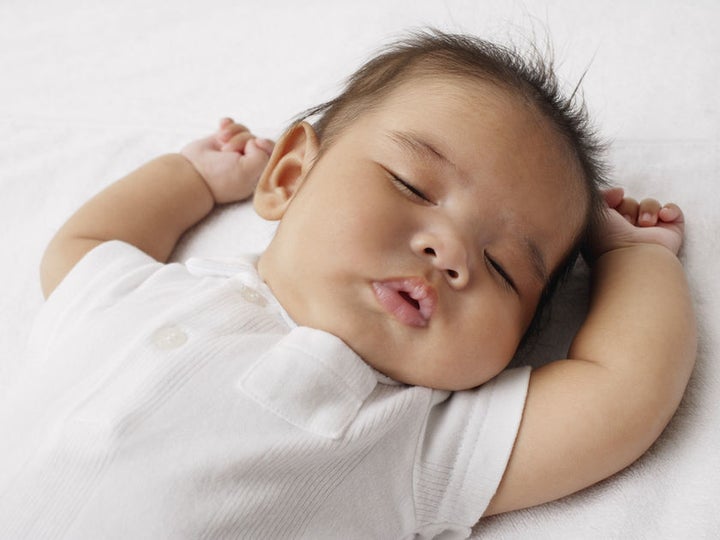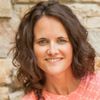
Sleeping baby on their back
In the efforts to educate parents about babies and safety, organizations and associations have tried to come up with catchy acronyms and short, memorable sayings to help highlight the main point of the recommendation being imparted while making it easy for parents to remember.
Among some of the catchy phrases and acronyms that may be familiar, such as "stop, drop, and roll" or TICKS (as it applies to babywearing), one that was developed for sleep is ABC - Alone on their Back in the Crib.
A = AloneB = BackC = Crib
Since this acronym has been developed and marketed in 1992 by the American Academy of Pediatrics (AAP), we have seen Sudden Infant Death Syndrome (SIDS) rates drop. In 2000, the rate had dropped 50 percent.
However, the rates of SIDS have plateaued in recent years, and most recently, infant sleep deaths have started to rise, due to unsafe products being used for sleep and the resurgence of co-sleeping among parents who have been misled into thinking that there are safe ways to bed share, which is scientifically proven to not be the case.
So let’s break down the ABCs:
A is for Alone. In this case, this would mean that the baby should sleep alone, in their own separate space for all sleep situations. This space should be in either their crib, a bassinet, or a Pack and Play. These spaces must meet FDA regulations and have passed CPSC safety testing for sleep surfaces for babies. (In the United States, it is not legal to market any sleep surface for a baby as a crib or bassinet unless they have passed the rigorous safety tests.) Bed-sharing, or co-sleeping in the same bed, with the baby is not a safe option. Bed-sharing is the single greatest risk factor for infant deaths that are sleep related. It has been found that nearly 70% of sleep-related deaths for infants were associated with bed-sharing. However, room sharing (sleeping in the same room as your baby, in their own respective sleep spaces) has been found to reduce the risk of SIDS by almost 50%, particularly in the first 6 months.
B is for Back. Since the AAP first recommended in 1992 that all babies be put to sleep flat on their backs, scientists and medical professionals have seen a significant decline of infant deaths in their beds. It is no longer recommended that babies be placed on their stomachs or their sides. When infants are placed on their back, called the supine position, the chances of babies suffocating on their own gases or on other objects are greatly reduced, versus if they were laid down in the prone position (on their stomachs). Despite this finding, there are parents who have concerns of the baby choking or aspirating on their spit up, or if they vomit while sleeping. In reality, it has been found that babies are safer to be in the supine position because of how their gag reflux works. Additionally, babies who are on their backs are more easily able to turn their heads and/or protect their airway if they were to spit up while sleeping, versus those who were laid down on their stomachs to sleep.
C is for Crib. The last part of the ABCs is the Crib. In this case, crib can also mean a safety regulation-approved bassinet and pack and play/play yard. This DOES NOT include car seats, swings, co-sleepers that sit on parents' bed, Dock-A-Tots, and Rock and Plays that places the baby at an incline. The crib must meet FDA standards of being newer than 2011 and meet the new safety standards released by the CPSC (Consumer Product Safety Commission). To help prevent risks of suffocation and death, the mattress should be firm, covered with only a fitted sheet. The crib/bassinet/Pack and Play should be completely empty, with no blankets, stuffed animals. bumper pads, toys, or pillow. Having any of those items in the crib with the baby can increase their chances of suffocation. To add in another catchy saying: Bare is Best when it comes to the child's sleep environment. Having the baby sleep on any other mattress other than the one made for the crib/bassinet/pack and play can also increase the child's chances of suffocation, due to the surface not being as firm as a crib mattress and can dull their arousal points which is what helps a baby wake up when things could be going wrong. Having the baby sleep on a flat, firm surface will allow their body to work efficiently while in sleep mode.
In following the safe sleep guidelines of the ABCs, parents significantly decrease the risk of strangulation, positional asphyxiation, and other infant sleep deaths from happening to their child while they are sleeping. It can be tempting for parents to bring their child to the adult bed at night, or there may be a special stuffed animal that hold sentimental value that would be adorable in the crib, or believing that laying their child on their stomach will help them sleep better, all of those actions carry a significant risk and will increase the risk of the child suffering from a sleep related death or injury. For all naps and overnight sleep, it has been statistically proven that following the sleep ABCs can aid in the intent to keep the sleeping baby more safe.
